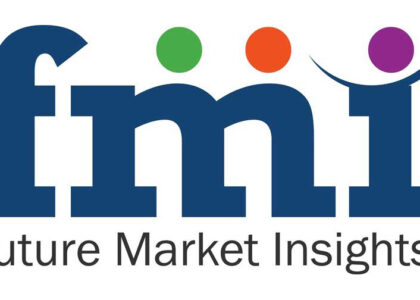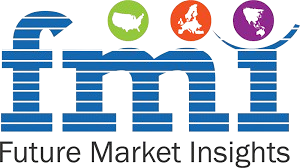The hypodermic syringes market is set to maintain its robust growth, with an average Compound Annual Growth Rate (CAGR) of 3.2%. Currently valued at US$ 3.51 billion in 2022, the market is expected to achieve a market revenue of US$ 4.66 billion by 2032.
The forecasted period holds promising growth prospects for the hypodermic syringes market. These syringes, used for withdrawing or injecting fluids beneath the skin, are witnessing increased demand due to the rising prevalence of chronic diseases. Their application is especially crucial in the medical sector, where ease of use is a key factor driving demand.
Government initiatives and a focus on reducing dosing errors have further propelled the sales of hypodermic syringes in healthcare markets. The market’s traction is also driven by competitive price ranges and innovative schemes. These factors combined contribute to the growth of the hypodermic syringes market, establishing its position as a vital component of the healthcare industry.
Request For Report Sample: https://www.futuremarketinsights.com/reports/sample/rep-gb-9423
Drivers in the Hypodermic Syringes Industry:
- Increasing Vaccination Initiatives: The global emphasis on vaccination programs, especially during pandemics and for routine immunizations, is a significant driver for the growth of the hypodermic syringes market.
- Rising Prevalence of Chronic Diseases: The increasing prevalence of chronic diseases, such as diabetes, necessitates regular administration of medications, driving the demand for hypodermic syringes in both clinical and home settings.
- Technological Advancements in Syringe Design: Ongoing innovations in syringe design, including safety features, precision, and ease of use, contribute to increased adoption of hypodermic syringes in healthcare settings.
- Expanding Geriatric Population: With a growing elderly population globally, there is a heightened demand for healthcare services, leading to increased use of hypodermic syringes for various medical treatments and therapies.
- Government Initiatives for Safe Injection Practices: Regulatory measures and initiatives by governments to promote safe injection practices and prevent needlestick injuries are boosting the market for advanced and safety-engineered hypodermic syringes.
Industry Trends in the Hypodermic Syringes:
- Rise of Autoinjectors and Prefilled Syringes: The market is witnessing a trend towards the adoption of autoinjectors and prefilled syringes, providing convenient and ready-to-use options for patients and healthcare professionals.
- Growing Preference for Safety-Engineered Syringes: Healthcare facilities are increasingly adopting safety-engineered syringes to minimize the risk of needlestick injuries among healthcare workers, contributing to market growth.
- Focus on Environmentally Friendly Materials: There is a trend towards developing hypodermic syringes using environmentally friendly materials, aligning with the broader shift toward sustainability in healthcare product manufacturing.
- Telemedicine Impact on Homecare Usage: The rise of telemedicine and home healthcare services is influencing the demand for hypodermic syringes as patients increasingly self-administer medications at home under professional guidance.
- Customization and Personalization in Syringe Manufacturing: Companies are exploring customization options in syringe manufacturing, allowing for tailored solutions to meet specific therapeutic and patient needs in the dynamic healthcare landscape.
Ask an Analyst: https://www.futuremarketinsights.com/ask-the-analyst/rep-gb-9423
Regional Outlook
Geographically, the global hypodermic syringes market has been divided into seven key regions which include North America, Latin America, East Asia, South Asia, Europe, Middle East & Africa (MEA) and Oceania. Europe is expected to hold maximum market share in the global hypodermic syringes market owing to the well-established healthcare industry in the region. The healthcare sector in India is diversified and offers enormous opportunities in every segment which includes payers, providers, and medical technology.
Increasing competition pushing businesses to explore and adapt according to the latest trends and dynamics is expected to impact the hypodermic syringes market in the country positively. There is a direct effect of many physician visits in the contribution of revenue generation in the industry. The demand for medical devices rises substantially with an increase in the number of physician visits. This is expected to further contribute to the global hypodermic syringes market during the forecast period.
Key Players
Following are some of the key players operating in the global hypodermic syringes market: Terumo Corporation, Albert David Ltd., Becton, Dickinson and Company, Nipro Corporation, Smiths Medical, Hindustan Syringes & Medical Devices Limited, etc. Many local and unorganized players are expected to contribute to the global hypodermic syringes market during the forecast period.
Buy Report Now: https://www.futuremarketinsights.com/checkout/9423
Key Segmentation
By Material Type:
- Polymer Syringes
- Cyclic Olefin Polymers (COP)
- Cyclic Olefin Copolymers (COC)
- Polypropylene and Other Polymers
- Glass Syringes
By Sales Channel:
- Manufacturers
- Distributors
- Retailers
By End User:
- Hospital
- Diabetic Care Centers
- Blood Collection Centers
- Veterinary Care Centers
- Clinics
By Region:
- North America
- Latin America
- Europe
- Asia Pacific
- Middle East and Africa
Author
Ismail Sutaria (Lead Consultant, Packaging and Materials) has over 8 years of experience in market research and consulting in the packaging & materials industry. Ismail’s strength lies in identifying key challenges faced by the client and offering logical and actionable insights to equip the clients with strategic decision-making power.
Ismail has been an instrumental part of several transformational consulting assignments. His key skills include competitive benchmarking, opportunity assessment, macroeconomic analysis, and business transformation advisory. Ismail is an MBA holder in Marketing and has a Bachelor’s Degree in Mathematics.
About Future Market Insights (FMI)
Future Market Insights, Inc. (ESOMAR certified, recipient of the Stevie Award, and a member of the Greater New York Chamber of Commerce) offers profound insights into the driving factors that are boosting demand in the market. FMI stands as the leading global provider of market intelligence, advisory services, consulting, and events for the Packaging, Food and Beverage, Consumer, Technology, Healthcare, Industrial, and Chemicals markets. With a vast team of over 5000 analysts worldwide, FMI provides global, regional, and local expertise on diverse domains and industry trends across more than 110 countries.
Contact Us:
Future Market Insights Inc.
Christiana Corporate, 200 Continental Drive,
Suite 401, Newark, Delaware – 19713, USA
T: +1-845-579-5705
For Sales Enquiries: sales@futuremarketinsights.com
Website: https://www.futuremarketinsights.com
LinkedIn| Twitter| Blogs | YouTube



